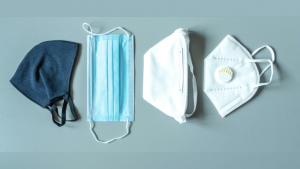Study findings state that statewide mandatory face mask policies reduced COVID-19 deaths
Statewide policy on face mask use reduces case fatality rate, new research suggests.
Researchers at the UNC Charlotte, Department of Public Health Sciences examined the COVID-19 incidence and mortality data in the 3,102 counties across the U.S using data from the John Hopkins University and Kaiser Family Foundation. They found that early adoption of state-directed mandatory face mask policies was associated with a 10% reduced mortality risk ratio across all counties and a 5% reduced mortality risk ratio among urban counties.
At the end of August 2020, 3,079 US counties reported at least one confirmed case of COVID-19, and about two-thirds of all U.S. counties had a state policy on mandatory face mask use. According to the study, it took an average of 62 days from the first reported case in the U.S. for COVID-19 to spread to the 3,079 counties. However, it took an average of 101 days from the first reported case in the U.S. for the counties to have a statewide policy on face mask use.
“As of August 31, 2020, the median county-level case fatality rate was 1.54%. Among the 2,009 counties with a statewide policy on face mask use, the median case fatality rate was 0.81%”, Oluwaseun Adeyemi, a public health sciences doctoral candidate and one of the study authors, writes.
But it was not only the reduced case fatality rate among the counties with a statewide policy on a face mask that was intriguing. Counties whose statewide policy on face mask use came before the 62-day mark had a reduced mortality rate ratio compared to other counties that instituted the statewide policies after the 62-day mark. Adeyemi stated that “early adoption of face mask policy was associated with a 10% reduced mortality risk compared to counties with late adoption of statewide face mask use policy”.
The authors selected the death counts a week before and three weeks after the statewide policy on face mask use. For counties without a statewide policy on face mask use, death counts corresponding to dates of an adjacent state with a mandatory face mask policy were selected. The case fatality rate was measured as the proportion of deaths in a county divided by the number of confirmed cases. The authors will be presenting these results at the Society of Behavioral Medicine’s (SBM’s) 42nd Annual Meeting & Scientific Sessions on April 12, 2021.
About University of North Carolina at Charlotte
UNC Charlotte is the third largest and the fastest-growing university in North Carolina. The public health sciences department at UNC Charlotte prides itself in its faculty, whose research focuses on diverse areas of public health issues which include occupational health, suicide, maternal health, infant and child health, social determinants of health, cancer, and chronic diseases, and geriatric population. Based in Charlotte, the third fastest-growing urban city in the U.S., the public health sciences comprises a community of students, staff, and faculty from diverse backgrounds, working together to solve local, regional, and national emerging public health issues.
About SBM
The Society of Behavioral Medicine (SBM) is a 2,400-member organization of scientific researchers, clinicians, and educators. They study interactions among behavior, biology, and the environment, and translate findings into interventions that improve the health and well-being of individuals, families, and communities (www.sbm.org).

















